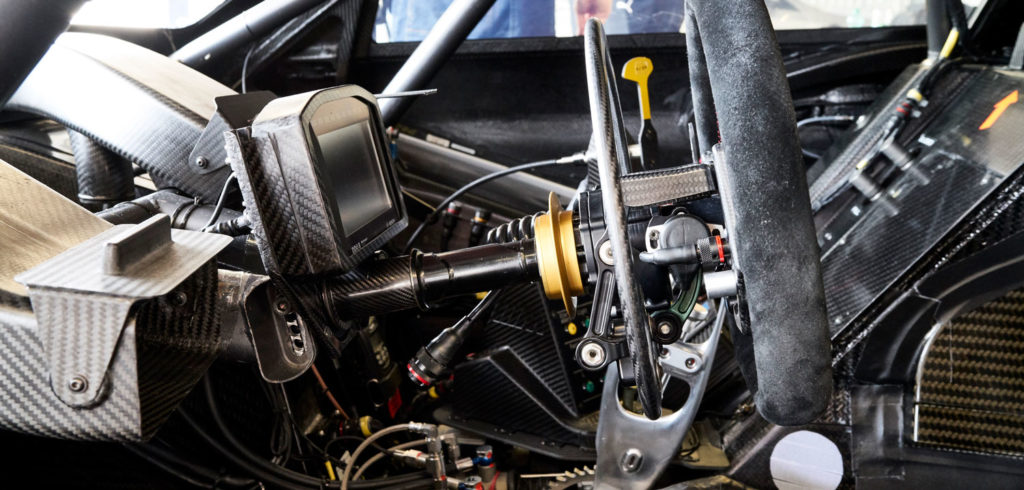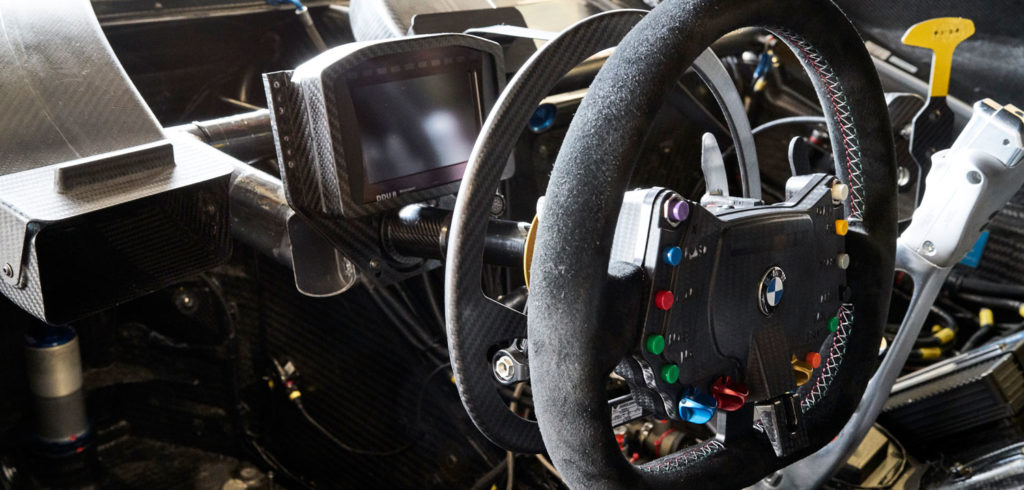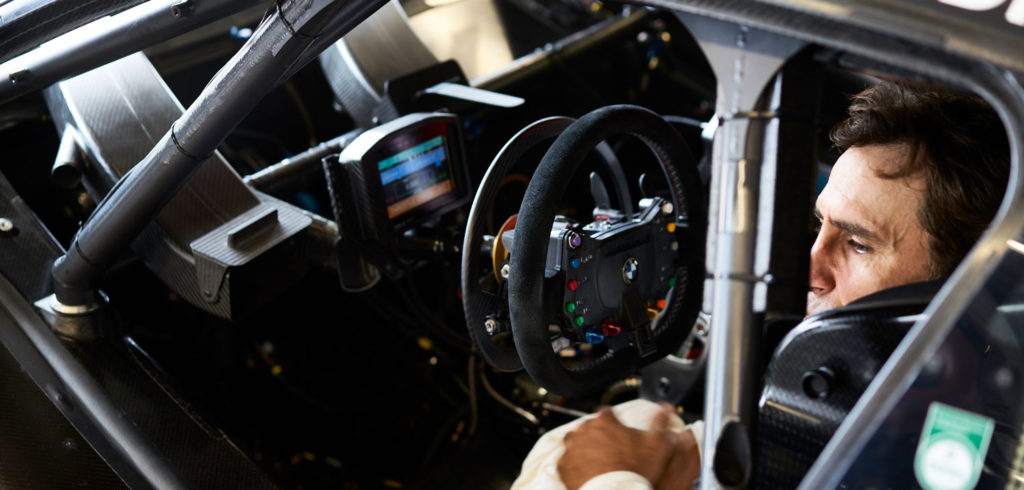Alex Zanardi, the Italian racing driver who lost both legs in a CART accident in 2001, will race as a guest driver in the upcoming DTM race at Misano, Italy, on the last weekend of August. We take a look at the modifications BMW made to the M4 DTM to enable Zanardi to get the most out of the car.
Although Zanardi has in the past raced using modified pedals and leg prostheses, the M4 DTM has been modified to be operated by hand controls for more precision. This week, he familiarized himself with the modifications during testing sessions on Tuesday and Wednesday at the Vallelunga circuit.
Braking system
The newly developed hand-operated brake system replaces the combination of brake pedal and permanently attached artificial leg, and requires for less effort.
The brake lever is located to the driver’s right, in the center console area. The brake lines have been extended and routed from the footwell to this lever. As a result, a pedal box is no longer necessary, leaving the footwell completely empty.
The large brake cylinder has been adjusted slightly to lower the braking effort. Where a regular driver must apply 100-120kg of pressure on the brake, a maximum 70kg on the lever is sufficient for Zanardi. As well as the size of the brake cylinder, the improved leverage of the brake lever itself also makes the whole braking procedure easier.
For the new system to work, BMW Motorsport engineers turned the operating principle of the brake cylinder on its head. While the brake pedal in a normal BMW M4 DTM exerts tensile force on the brake cylinder, the hand-operated brake lever in Zanardi’s car applies pressure to the cylinder.
Zanardi said on the testing day, “Driving a race car like the BMW M4 DTM is physically very demanding. For me, it would be far more strenuous if I were to continue to brake with my prosthesis as I have done up to now.”
As with every BMW M4 DTM, Zanardi’s car also has a parking brake, which is used to build up preload pressure to allow the fastest possible start. Like his fellow BMW drivers, Zanardi can operate this parking brake via a button on the steering wheel. However, he can also mechanically activate and release the parking brake via a lever on his brake lever.

Centrifugal clutch
In a standard DTM car, the drivers use a hydraulic clutch for setting off; in Zanardi’s car, a fully automatic centrifugal clutch is used instead. This automatically opens and closes at certain engine speeds without any driver involvement. For Zanardi, the system has the advantage that he does not need to use one of his hands to operate a clutch lever.
BMW reports that initial tests showed that the centrifugal clutch worked very well. Both the pulling away slowly from the garage and the fast getaway at the start or after a pit stop worked seamlessly, while the sprint from 0-100km/h was roughly as fast as with the conventional system.
Gear shift
The process for changing gears on Zanardi’s car is mostly the same as it is on a normal BMW M4 DTM, with shift paddles on the steering wheel – up on the right, down on the left. However, because downshifting is usually associated with braking, for which the right hand is needed, Zanardi can also downshift using an additional button on the end of the brake lever.
Throttle and throttle
The system that takes over the function of the throttle pedal has been adopted from GT cars modified for him in the past, where pulling a throttle ring on the rear of the steering wheel accelerates the car. The continuous ring can be operated with both hands or one. This plays no role in the way the system functions. The throttle ring uses the same sensors as the standard throttle pedal.
Like the throttle ring, the steering wheel is the same as the one Zanardi has used in the past on adapted GT cars, with some buttons getting a different function. One button controls the DTM car’s DRS system, while the knobs toward the bottom of the steering wheel, which are used to configure driver aids such as ABS in GT cars, have no function in the BMW M4 DTM.




